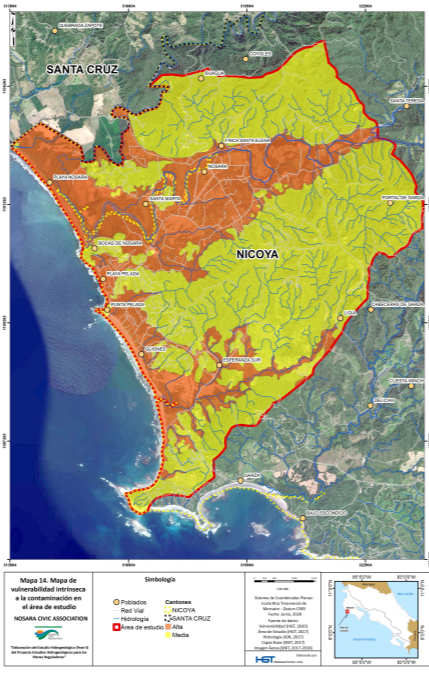After a lot of work and effort, today with great happiness, we want to inform you that the Costa Rican National Groundwater Irrigation and Drainage Service (SENARA) approved a hydrogeological study. The NCA financed, thanks to the collaboration of the generous members of the Nosara Civic Association, and coordinated this study. It is an essential component of the technical diagnostic studies of the Regulatory Plan.
You might be wondering what a hydrogeological study is, what it is for and why this is important for the regulatory plan. This will be explained in a way that is hopefully easier to understand.
The first thing we want to be clear about is that since 2018,the Nosara Civic Association has been supporting the Municipality of Nicoya to develop the Regulatory Plan for the entire canton of Nicoya; this includes the district of Nosara.
This plan is of great importance for all of us who are residents of Nosara. With this tool the Municipality will be able to regulate and plan urban development, as well as guide the future economic, social and environmental processes of the canton.

What has happened to the Plan?
Thanks to our support and joint work with the Municipality of Nicoya and the Regulatory Plan commission, we are in the second of the four phases as defined by INVU. This stage looks at the development and integration of six components.. To date we have managed to conclude the social, economic and special physical components.
Currently we still need to complete the political-institutional, legal and environmental components. The environmental component is the most complex, since it depends on rigorous technical studies that will determine some of the criteria used in making decisions.
During 2020 and 2021 we hired the company Hidrogeotecnia to support the Municipality of Nicoya and advance with the hydrogeological studies for Nosara.
It is a requirement for hydrogeological studies to be approved by SENARA,(they are the highest authority in Costa Rica in terms of groundwater), in order to have official support. And we did it!
Why is the study important?
After a rigorous process of analysis, the study reveals how the aquifers located in Guiones, Pelada, Nosara and Santa Marta present high levels of vulnerability to contamination.

Simply put, this high vulnerability to contamination reflects the fact that these aquifers are prone to contamination with sewage, gray water, fuel spills, heavy metals or some other type of contaminant on the surface.
To arrive at these results, the company carried out, among other analyses, a methodology called G.O.D. (Groundwater occurrence, Overlying lithology, Depth of groundwater. It analyzes the materials that cover the aquifers, evaluates how deep these groundwaters are and the type of substrate that is in the aquifer.
Now what’s next in the regulatory plan?
As previously said, we are still in the second phase; we need to conclude the Environmental Fragility Indices, the Environmental Scope Analysis and the Sustainable Development Regulations. Fortunately, the Municipality will cover the expenses for these.
In order to conclude the second phase, called the diagnostic stage, work is being done in parallel, to carry out the institutional and legal political components using the internal resources of the Municipality.
Once these components are concluded, the third phase could be started. This is known as the proposal formulation stage. The information is taken back to the communities of the canton of Nicoya to receive feedback and prepare the final version of the proposal.
The last phase consists of the final approval, which is the responsibility of the National Institute of Housing and Urbanism (INVU) and the Municipal Council of Nicoya.
Although the road sounds long and complicated, our commitment is to continue supporting the Municipality of Nicoya so that there is a tool that helps regulate planned development that exists hand in hand with nature – thus protecting the natural resources that we enjoy in our community. . Another piece of good news is that despite the complexity of the process, the Municipality is advancing at a very good pace in preparing the plan, when compared to other Municipalities in the country.
